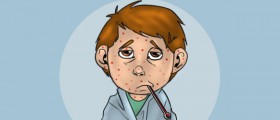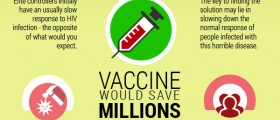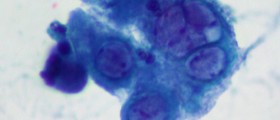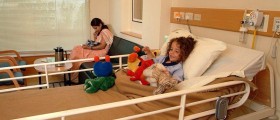
Shingles, medically known as herpes zoster, is a viral infection that features with specific distribution of skin rash and painful skin lesions. The pain caused by shingles is sometimes unbearable. Even though the rash can affect each and every part of the body it predominantly occurs in the middle of the back around one side of the chest to the breastbone.
This condition develops as a consequence of previous infection with varicella-zoster virus. The virus is primarily responsible for the onset of chickenpox. A person who has had chickenpox never gets rid of the virus. Namely, the virus stays dormant in nerve tissue near the spinal cord and brain. Once the virus reactivates due to some trigger shingles occur.
Clinical Characteristics of Shingles - Skin Rash
Shingles rash typically affects only a small section of one side of the body. The rash is responsible for intensive pain, itching, burning and tingling sensation of the affected skin. The skin may be also numb. Shingles rash comprises fluid-filled blisters that eventually break open and after a certain period of time crust over.
Apart from the characteristic skin rash patients suffering from shingles may additionally develop fever and chills, general achiness, headaches and fatigue.
Causes of Shingles
Shingles commonly affect specific groups of people. The most susceptible ones are elderly people and immunocompromised people. The infection develops due to improper and insufficient immune system that allows the virus to reactivate, start to multiply and cause characteristic symptoms and signs of the disease.
Patients suffering from shingles can easily pass varicella-zoster virus to anyone who has not had chickenpox. Transmission of the infection occurs if a person comes in contact with open sores and the content of blisters of the shingles rash. Once infected the person does not develop shingles. Instead, he/ she develops chicken pox.
Are There any Complications of Shingles?
Yes, there are several potential complications of shingles and they vary from mild to severe. Postherpetic neuralgia is a serious complication and results from damage to nerve fibers. The condition is treated with painkillers, antidepressants or anticonvulsant medications. Postherpetic neuralgia may linger for months after the onset of shingles. Vision loss may affect patients suffering from a type of shingles called ophthalmic herpes zoster. Neurological problems caused by shingles include encephalitis, hearing or balance problems and facial paralysis. These complications are sometimes permanent and cause complete lost of certain functions. And finally, once the blisters rupture they become susceptible to bacterial infection. This infection is not so severe complication of shingles and is easily treated.

















Your thoughts on this
Loading...